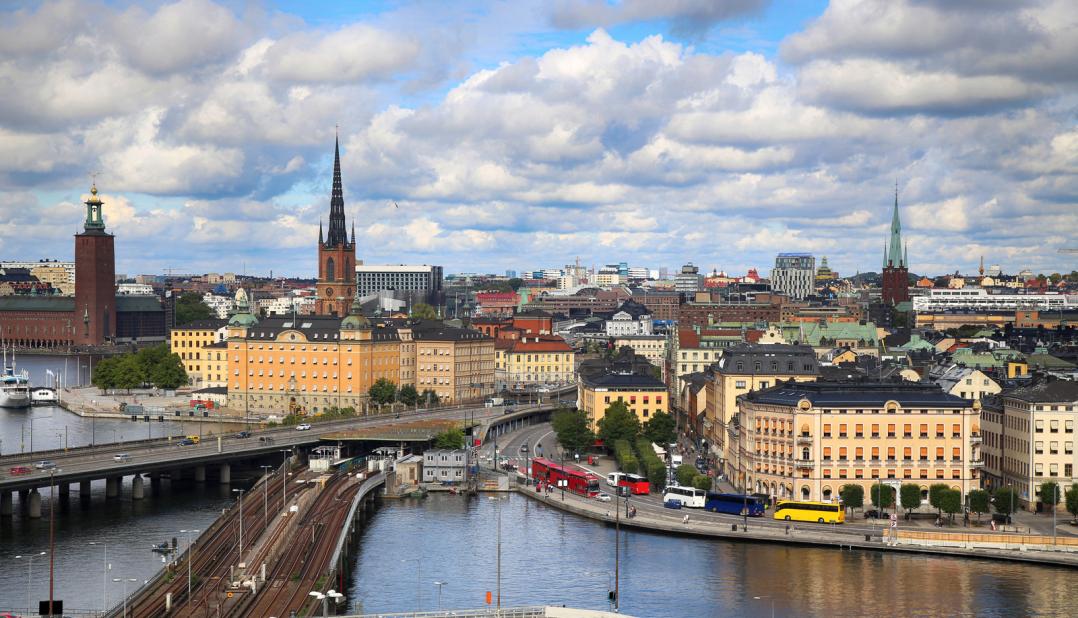
Travelers visiting Sweden can learn and practice 11+ essential words and phrases here. We’ve posted the first 11 below.
Listen.
Record yourself.
Play back and compare.
(See more “Learn and Practice Tips” below!)
The First 11 Swedish Phrases
Learn and Practice Tips
- Click the black arrow to hear the Swedish speaker.
- Click the red dot once to record yourself, click the black square to stop recording.
- When you click the black arrow again, you’ll hear the native speaker and then yourself.
- Do it several times until you sound like the Swedish speaker.
- Then “Choose a Study Mode” and test yourself with one of the Quizlet games! (You may need to adjust your Options with top right icon
 .)
.)
Why learn these Phrases?
Whenever you travel to a country where you don’t speak the language, you’ll encounter situations when these words will be useful.
Let’s say, you’ve ordered your first meal in a restaurant in Sweden and as the waiter serves you, you simply say “Tack”.
Even if the waiter knows that you don’t speak Swedish, your effort may make him smile …
And beyond “Please” and “Thank you”, basic greetings really are the staple of first words you should know in any country you visit.
Some Pronunciation Tips
Swedish is a Germanic language and shares many sounds with German, Dutch and English. However, while most consonants are pronounced similar to English, some of the vowels have different sounds in Swedish.
Here are examples from the list of phrases below:
“a” in “Ja” sounds like “a” in “father”
“å” in “Varsågod” sounds like “aw” in “saw”
“ä” in “Ursäkta” is close to “a” in “many”
“o” in “god” is close to “oh”
“o” in “morgon” is close to “o” in “frost”
Note: the “g” in “morgon” and “mig” has a “y” sound, as in “yes”.
But don’t worry too much about the above. Try to listen and match the pronunciation you hear to the words you see.
You’ll pick up the differences fast!
Walking in the country side…
While there’ll be many opportunities to use basic greetings in Stockholm and other Swedish towns, knowing them when you’re outside of a city is even more important.
Being a visitor in a Sweden will make you much more welcome, when you make the effort to greet people in Swedish.
Yes, the Swedes are one of the most English-speaking people in Europe. But surprising locals you meet with just a few Swedish words and phrases will often get you a smile.
Personal Experiences and a Little History
In 2013 we took a trip to Norway and Sweden. During our trip we met several Swedes and also stayed in Stockholm for a week. We learned quite a bit about the common Swedish/Norwegian/Danish history and wrote about the Norwegian Language Politics in our Gamesforlanguage Blog.
We noted there: “The story of the peaceful dissolution of the union between Norway and Sweden (in 1905) makes interesting reading for history buffs, who also may be intrigued by the (Norwegian) people’s election (!) of the Danish (!) crown prince as their new king.”
In 2017 we very much enjoyed our 2 weeks in Denmark and wrote about it in our European Travels 8 post.
While we certainly found many similarities between the Nordic languages, we found Swedish easier to understand than Danish.
If you just compare the first 11 essential words of both languages, you’ll notice that 6 are nearly identical (except for “tak” – Danish vs. “tack” – Swedish)
The next 12 Phrases
Once you’ve mastered some of the basic words, polite phrases and greetings, it’s time to learn asking some “where…?” questions.
Even with GPS-enabled smart phones, you’ll often want to know where the bathroom is or the next ATM, information those phones still don’t have!
The next 12 Swedish phrases you’ll find in Swedish 2 For Travel.